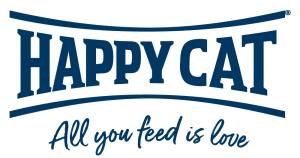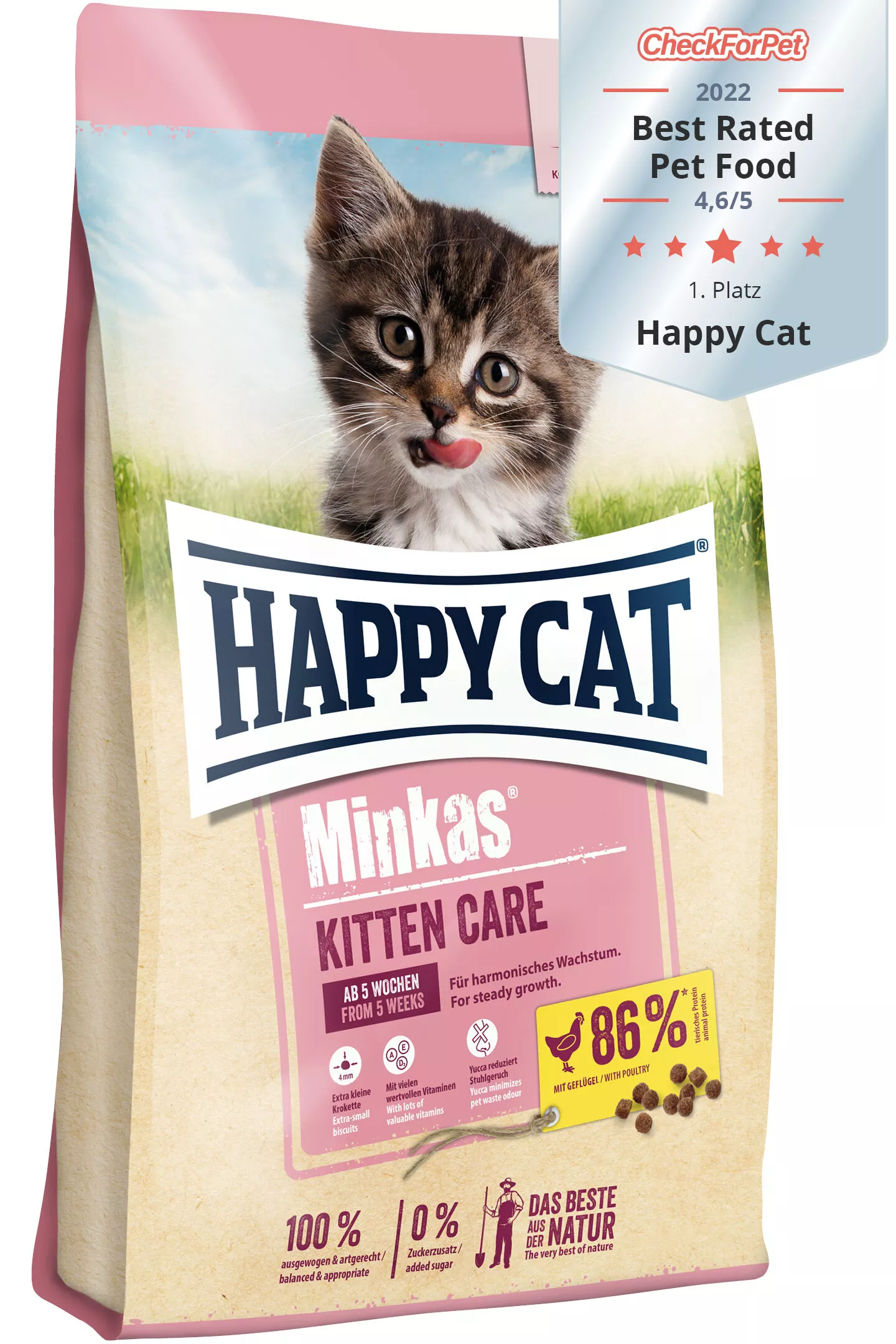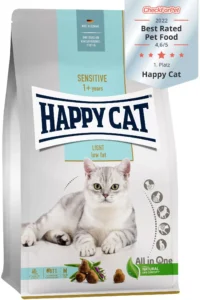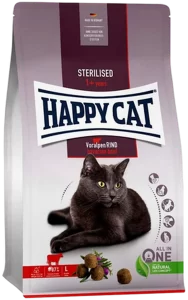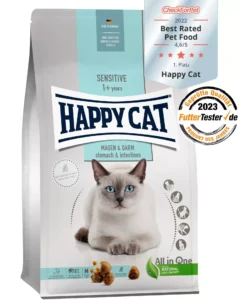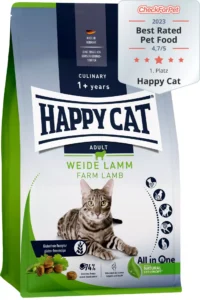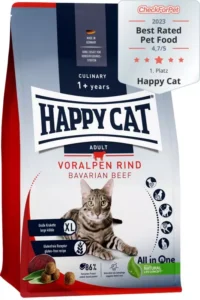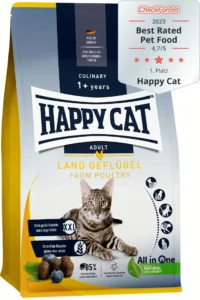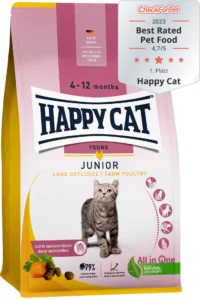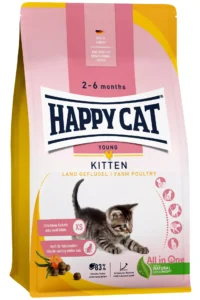Happy Cat
Minkas - Kitten Care Poultry
Kitten
Regular
Indoor and Outdoor
Click to reveal the score breakdown
Tap to view ingredients, guaranteed analysis and more
Ingredients
Poultry protein (partly hydrolysed)
31%
Poultry fat
Potato flakes
Maize flour
Wheat
Maize
Meat meal
Fish meal
Beet pulp* (desugared)
Lignocellulose
and also:
Sunflower oil, apple pomace*, sodium chloride, rapeseed oil, yucca schidigera* (0.04%); *dried, **dried, part hydrolysed
Vitamins and Additives
Vitamin A 15000 IU
Vitamin D3 1250 IU
and also:
Vitamin E (all-rac-alpha-tocopheryl acetate) (75mg), Taurine (1000mg), Iron (iron(II) sulphate; monohydrate) (130mg), Copper (copper(II) sulphate pentahydrate) (12mg), Zinc (zinc oxide) (100mg), Manganese (manganese(II) oxide) (15mg), Iodine (calcium iodate; anhydrous) (1.5mg), Selenium (sodium selenite) (0.15mg), DL methionine (4500mg), Antioxidanst: tocopherol-rich extracts from plant oils.
Guaranteed Analysis
Crude Protein
32%
Crude Fat
18%
Crude Fiber
2.5%
Moisture
8%
Crude Ash
6%
Calcium
1.3%
Phosphorus
0.9%
Potassium
0.5%
Magnesium
0.08%
Omega 3
0.25%
Omega 6
3%
Product last updated: July 20, 2024, 6:36 PM
Please hold on while we’re getting the best offers for you
6714
